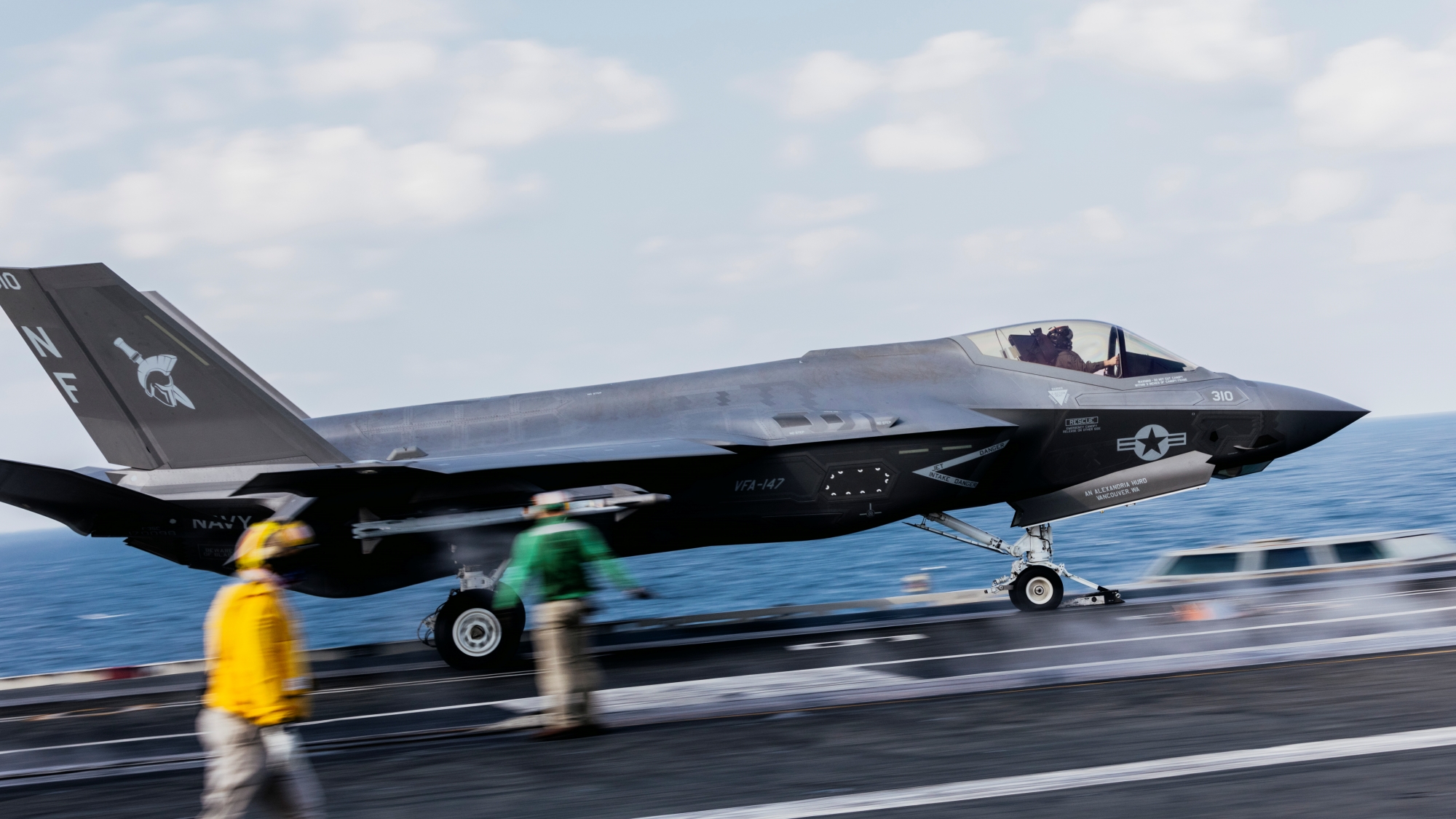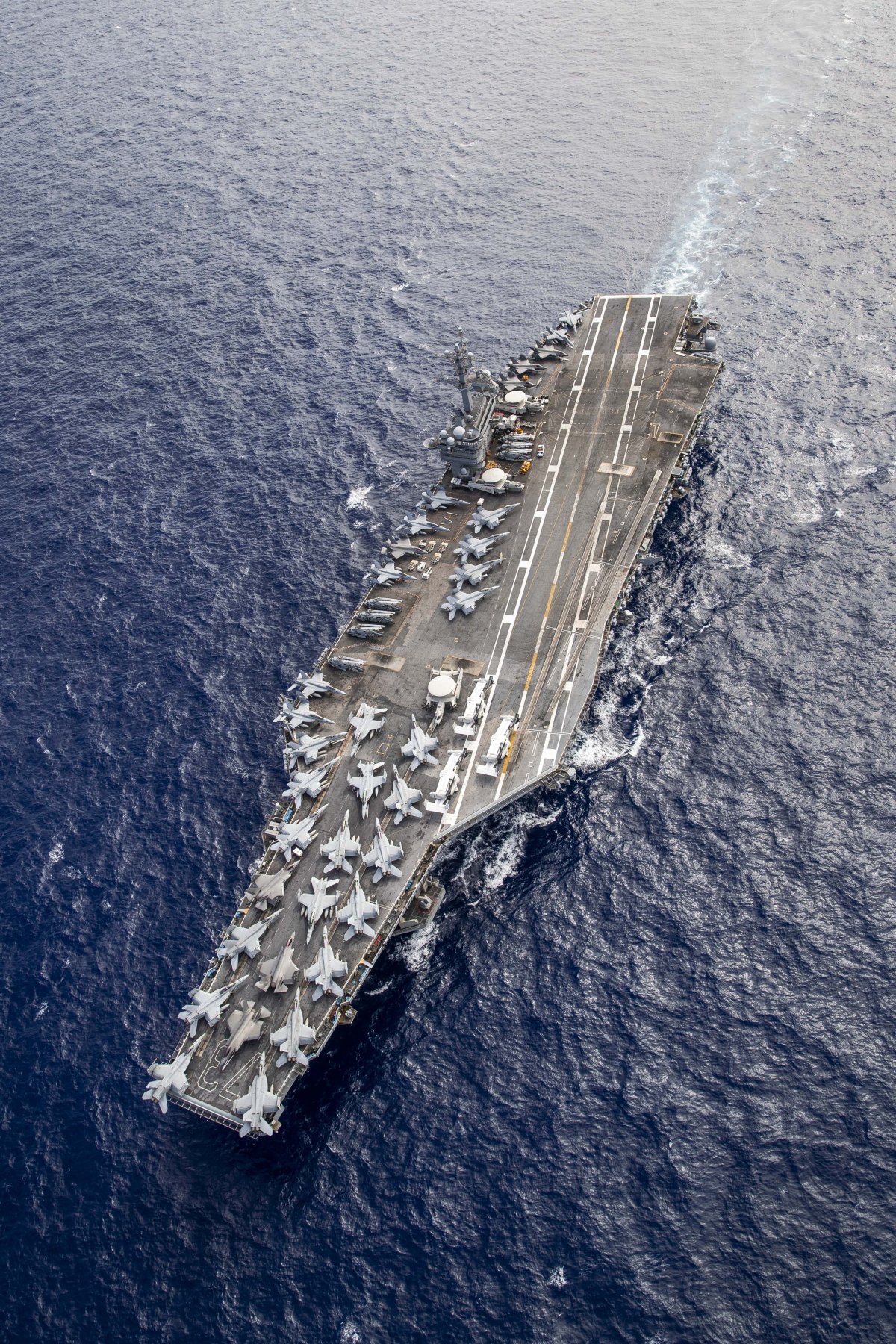
American carrier-based stealth fighter jets have reached their new home in Japan for the first time as the United States enhances its alliance with the East Asian nation.
The arrival of the F-35C, a type of radar-evading combat aircraft also known as the Lightning II, is part of the forward deployment of USS George Washington in Japan. The “flattop” is one of 11 nuclear-powered aircraft carriers in service with the U.S. Navy.
Mass Communication Specialist 3rd Class August Clawson/U.S. Navy
Four fighter jet squadrons, including an F-35C squadron, departed the George Washington and arrived in Japan last week, the U.S. Navy said. They form the Carrier Air Wing 5, a carrier-based operational aviation organization that welcomed its first Lightning II jets.
While not deploying aboard the aircraft carrier, a total of 14 F-35C jets will be stationed at the city of Iwakuni on Honshu, one of Japan’s four main islands. They were officially unveiled on Sunday at Marine Corps Air Station Iwakuni, but one of them arrived on November 11.
Washington signed a security treaty with Tokyo in 1960. There are 54,000 U.S. military personnel stationed in Japan to deter aggression, protect the U.S. homeland, aid in Japan’s defense, and enhance regional peace and security, according to the U.S. Forces Japan.
In October, U.S. and Japan defense chiefs reiterated their commitment to modernizing the alliance’s command and control as well as to expand their bilateral military presence in Japan’s Southwest Islands, a chain of strategic Western Pacific Ocean islands located near China.
“The security environment in the Indo-Pacific requires that the U.S. Navy station the most capable ships and aircraft forward,” the naval service added, claiming that the multi-role F-35C is its most capable fighter jet that “enhances U.S. power projection and deterrence.”
China, which has the world’s largest navy with over 370 ships and submarines, claims the Japan-controlled Senkaku Islands in the East China Sea. Its military continues to operate and exercise around the self-ruled island of Taiwan, which Beijing views as its territory.
In the South China Sea, where China has territorial disputes with the Philippines, another Washington’s security treaty ally, U.S. aircraft carriers have operated in this region before to reinforce open sea lines of communication and the rules-based international order.
The F-35C has become the fourth type of U.S.-operated stealth fighter jet stationed in Japan. Both the F-22 Raptor and the F-35A, which are assigned to the U.S. Air Force, were sent to Okinawa, one of the Japanese southwest islands, for rotational deployment.

Mass Communication Specialist Seaman Geoffrey L. Ottinger/U.S. Navy
Meanwhile, the F-35B of the U.S. Marine Corps, another Lightning II variant, has been stationed at Iwakuni since 2017. The Japanese air force also operates the F-35A, making it the only country other than the U.S. that has hosted all three variants of the Lightning II.
Unlike the F-35C, which is designed explicitly for aircraft carrier operations, the F-35A can operate from conventional runways, while the F-35B is capable of landing vertically and taking off in very short distances, according to manufacturer Lockheed Martin.
The George Washington is scheduled to arrive at its home port at Yokosuka in the Greater Tokyo Area of Japan in mid-to-late November for forward deployment, while the carrier-based aircraft will arrive at Iwakuni prior to that, the Japanese Foreign Ministry said.
On Wednesday, the George Washington took part in a three-day exercise with Japan and South Korea in waters south of the South Korean island of Jeju. It assumed the role of the U.S. forward-deployed aircraft carrier from its sister ship, USS Ronald Reagan, in August.
